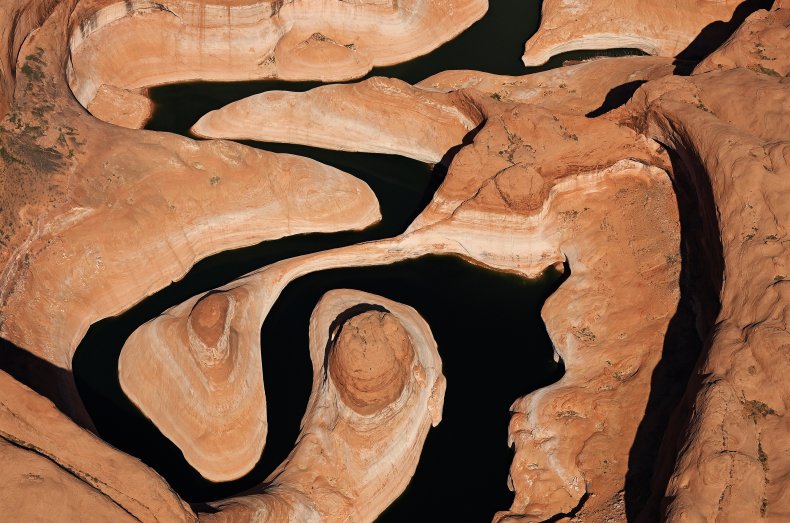A before-and-after video series on Twitter shows Lake Powell's surprising recovery since May.
After years of drought, Lake Powell, which is located in Utah and Arizona, reached drastically low levels last summer, but the lake has started to recover after a wet winter. Levels began rising in earnest in May but have since started to taper off and decline—a normal occurrence during summer months.
A new video on Twitter compares images of Lake Powell over a two-month period and shows the lake's recovery. In parts of Lake Powell, the recovery is so impressive that land has disappeared beneath the rising water.
The latest reading on the Lake Powell Water Database website was taken on Monday and showed that the lake's levels are at 3,582 feet, almost 60 feet higher than in May, when the lake was at 3,525 feet. This time last year, the lake was at 3,536 feet.

A series of videos tweeted on Tuesday by @JYellick compares images of Lake Powell from May of this year before the water levels started to rise and in July after the levels peaked for the summer.
The first image was taken in May. Water levels are low and there is desert landscape. The same image taken in July shows the water level is much higher, completely submerging some of the land in the previous image. The video continues for 45 seconds, showing different parts of Lake Powell.
Lake Powell 2023 Before and After! Amazing sight to see. Full video on my channel. https://t.co/zKbgGkRHLT pic.twitter.com/2bz808wqUC
— Desert Rat Explorations (@JYellick) July 25, 2023
A before-and-after image near the end of the video shows Wahweap Marina in Arizona. The May image revealed parched land and little water. However, in two months' time, levels rose so much that they submerged most of the exposed land from May.
The Twitter user linked to a video from their YouTube channel in a tweet from Saturday, which shows more before-and-after photos of Lake Powell, specifically at Glen Canyon Dam.
Lake Powell July Water Level! Before and After Video! https://t.co/zKbgGkRHLT
— Desert Rat Explorations (@JYellick) July 23, 2023
Lake Powell's levels are rising so much that the water is again submerging the calcium carbonate deposits that bleach the red rocks. While the rising water levels are erasing some evidence of drought at lower elevations, United States Geological Survey mineral resources program coordinator Colin Williams previously told Newsweek that the ominous bathtub ring bleaching Lake Powell won't be covered until the lake is much closer to full capacity, which is 3,700 feet.
Data from the last five years from the Lake Powell Water Database website shows that Lake Powell has already surpassed July 2022 and July 2021 levels.
However, it is unlikely that Lake Powell will rise much more this summer. High temperatures and increased water use during summer months take a toll on the lake, and officials may decide to release water from Lake Powell. A release would lower the water levels at Lake Powell but would supplement waters downstream, such as the Colorado River and Lake Mead. Water release is managed by the U.S. Bureau of Reclamation.
Newsweek reached out to the U.S. Bureau of Reclamation via email for comment.








